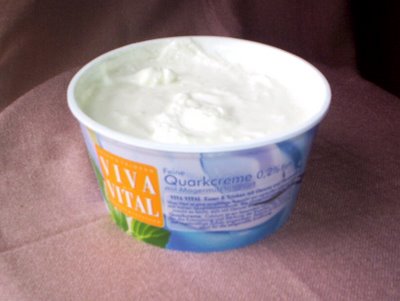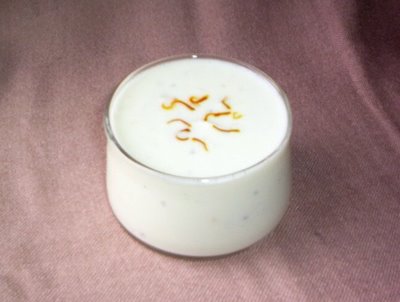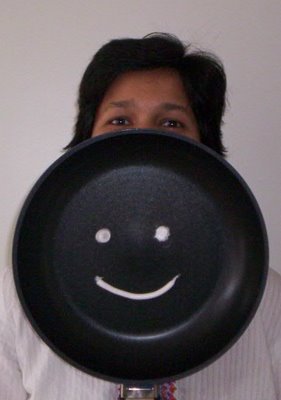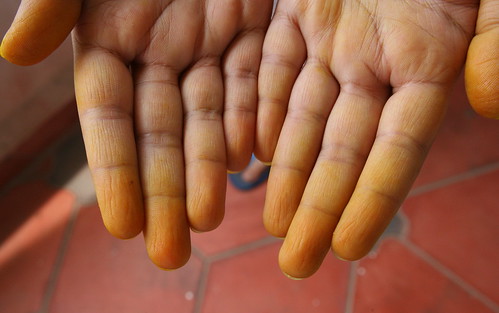It is the Hindu New Year today - Gudhi Padwa for Maharashtrians. It is one of the three and a half big ‘Muhurta’s meaning very auspicious days. I know, 3 ½ is rather odd, but then that’s how it is. We choose these auspicious days for new beginnings, for closing important deals, for making big buys e.g. a house or a car. About ten days preceding this auspicious day and on that day itself, the local newspapers are choc-a-bloc with advertisements for housing loans, cars & easy-pay options for them, bikes (which are a necessity in India unlike in the western countries, where it’s more of a hobby), household appliances and clothes (read Saris, Saris and more Saris).
On the day of Gudhi Padwa, Gudhis are hoisted outside the house or in a window visible from outside. A Gudhi is made up of a stick with a decorative piece of cloth (preferably silk or cotton) fastened to it, a garland each made up of Neem leaves and sugar candy is hung on it and then topped with a Tambya (see here in the 6th row from top) parked head-over-heels. The Gudhi then looks like this.
In addition to this, a delicious meal with about 100 dishes (ok, I’m kidding…just take the last zero out) is cooked. In Pune, where I come from, it is also somewhat of a tradition to buy sweets or the raw material for it from Mitahi shops, a very big favourite being Chitale Bandhu Mithaiwale. Enthusiastic people literally stand in queues for hours together so that they can buy the yummylicious dessert which is to later become a part of the meal.
One such thing, which people love to buy there is Malai Chakka, which is the main ingredient to make Shreekhand. Of course, there are many households (like my parents’), which take pride in saying that they make it at home and never buy it outside. Both types of Chakka give good results although with slight difference in thickness and texture. Since I am away from home as well as Chitale’s, I decided to make Shreekhand with a German soft cheese called Quark. It is made similarly as Malai Chakka, but has a different texture. Read more about it here. I guess it should be available in the US in larger stores. I know for sure, that Tesco Extra outlets in the UK store Quark. If not available in your area, then hanging thick yoghurt like this (see the second from bottom row of pictures) till all whey drips out, should work too. Quark, too, needs draining sometimes, if too runny.

Recipe for Shreekhand
Serves 2 (happy, Shammi?)
Ingredients:
# 500 grams Quark (If using yoghurt, perhaps about 750 grams?)
# ½ heaped cup sugar
# 5 green cardamoms (about ½ tsp if using readymade cardamom powder)
# a pinch nutmeg powder (optional)
# a few saffron strands (the more, the better)
Method:
1. Heat a tbsp of milk (maybe in the microwave) and add a few saffron strands to it. Let them rest in the milk as they give out their colour gradually.
2. Peel the cardamoms and powder the seeds in a mixer with a tbsp of sugar. (Instead of throwing away the peels, you could use them to flavour your tea/chai.)
3. If using whole nutmeg, grate it.
4. Place the Quark in a bowl. (If using yoghurt, drain it and then place it in a bowl. Whisk it with a ladle to break lumps, if any.)
5. Add sugar, cardamom and nutmeg, if using.
6. Whisk the mixture with a ladle. Using the immersion blender here is not a great idea.
7. Add the milk with the saffron now. Mix them gently with the rest, making sure that the delicate strands do not break.
8. When serving, garnish it with some more saffron or some slivered unsalted pistachios or any nuts.
Voilà! Your Shreekhand is ready.

Now do you want to eat it with a spoon or like my father with the ‘Phawda paddhat’, which means using your fingers like a shovel and then gobbling dollops of Shreekhand as if there were no tomorrow? :)
Tags: yogurt , curd cheese , Maharashtrian , Indian dessert , 101 Indian sweets




